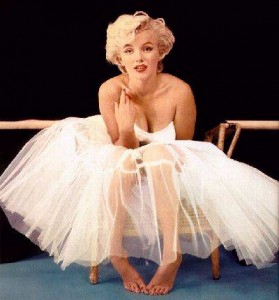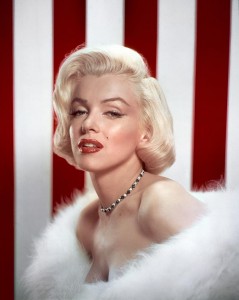The Rules Are Rules For A Reason
“We have been able to Grade the Passers for years by checking their Sales Averages and Frame Counts.” The Manager say to the small group of Photographers in this meeting. “Now we are going to be able to do the same thing with the Photographers. We have a new system in place to Grade the elements of a Portrait Sitting.”
None of us say anything. After a while, you learn not to say anything.
There are a handful of things that I do that The Lab doesn’t like. I’m tall and as a result I tend to shoot down on the Subjects and occasionally catch a bit of the floor in the image. I’ve learned to compensate for this by lowering the background until is has an extra foot or so on the floor. I also lower the camera, but being stooped over all day can be a bit of a bother. I took a stool with me at one Company and sat the whole time I was shooting. I do too much moving around now to try that now. This is a small problem and one that I can recognize as something that needs to be corrected.
Another thing I do is shoot with the Subject turned toward the camera. This is a major no-no for The Lab, even though the head facing the same direction as the body is seen every day on every Newscast in the world. It is also very popular with movie One Sheets, Magazine covers, and Actor headshots. And doesn’t everyone want to be a movie star? The Rule is-Turn the Body 45 degrees from the camera and turn the face back toward the camera or have the body square to the camera and the head turned. This is Yearbook Portraits 101, old style Rembrandt posing, and a rule that is made to be broken. Don’t have the Subject face the camera or have the Subject’s Shoulder face the camera.
A brief detour to Marilyn Monroe Country.
This image of Marilyn Monroe would be flagged by The Lab. There are a number of things wrong with it. She is facing the camera. Her hands are in an odd position, as are her feet. Her expression is a little bit off as well. The image is centered in the frame and the lighting is pretty boring…None of which matters in this case. This is a great portrait.
.
.
.
Marilyn has her head and shoulders in the Correct body angle here, but her lean puts her head off to one side, so The Lab would likely mark it off. The fact that her dress is gaping open would likely get a negative as well, but hey, it’s Marilyn Monroe. A Passer would edit this image by sliding it around until Marilyn’s head was centered and likely crop out the gaping dress as well.
.
.
.
This, in my opinion, is a near perfect portrait. I love the lighting, the pose, the background, the classic Monroe sex appeal. But it still has problems. The hair light is too bright for one thing. Her eyes are cut, meaning that she is looking out of the sides of her eyes instead of the middle. Her face is turned a little bit too far. Her shoulders are turned a little bit too far. But really, there is nothing I would change here.
.
.
Another thing that the Lab doesn’t like is a series of portraits with the same expression. Marilyn has basically the same expression in all of these portraits and most celebrities have only a handful of expression they give to the Camera. Is this really a bad thing? There are tons of pictures of Marilyn Monroe where she was photographed with the photographer paying strict attention to the rules. Easily my least favorite Monroe portraits are the ones she did when she first went to Hollywood and all the rules were applied.
So, are these portraits ‘bad?’ Not bad, but maybe not correct, either. If you are one of the millions of people who find Marilyn Monroe to be among the most beautiful women of all time, the technical aspects of the portraits are not as important as the Subject. The family and friends of every Subject should find them beautiful, no matter how much or how little they look like Marilyn Monroe.
I’ve worked for a lot of Companies that kept everything as simple as possible. These were shops that hired Button Pushers and Camera Operators and all you needed was a few minutes to get familiar with the setup. One place had a large transparency with the Posing Grid printed on it. All you had to do was get the top of the Head here, the shoulder there, and yell Smile. The images always came out perfectly centered and composed exactly as our Subjects expected them to be posed.
One time I had taken portraits of a couple and they came back after viewing them and complemented me on what a great job I had done. Then they saw the Grid over the Monitor and instantly dismissed any skill I might have had, as all I had to do was follow the guidelines. I had a similar reaction from someone I cooked diner for one time, they were amazed by the meal, until I told them I had used recipes from a cookbook. Oh well, anyone can do that. It’s a rare meal or portrait that I whip up out of nothing like Athena from Zeus’ Brow. But no one wants to know that. They want to think that you invented Portrait Photography just for them, the moment they walked in the door.
So it’s easy enough to follow the rules and easy enough to break them if you want to-but The Lab wants to be sure that you are breaking them on purpose and not just screwing up.
Being an Assembly Line Portrait Photographer means doing the same things over and over again. It means falling into a rut and not even trying any more. It means finding a pattern and going with the flow-so much so that if someone interrupts me to ask a question, I will often become lost in my sequence and almost have to start over again to finish it. So adding new things is often a challenge.
I still try though. I read books and try to add one or two new shots to a posing sequence, but there are only so many slots available and only so much you can do with any given subject. I still have the desire to throw money at the problem and buy all kinds of odds and ends-but then I end up only using them once or twice anyway.
It’s too easy to fall back on the basics. To just follow the Rules.


